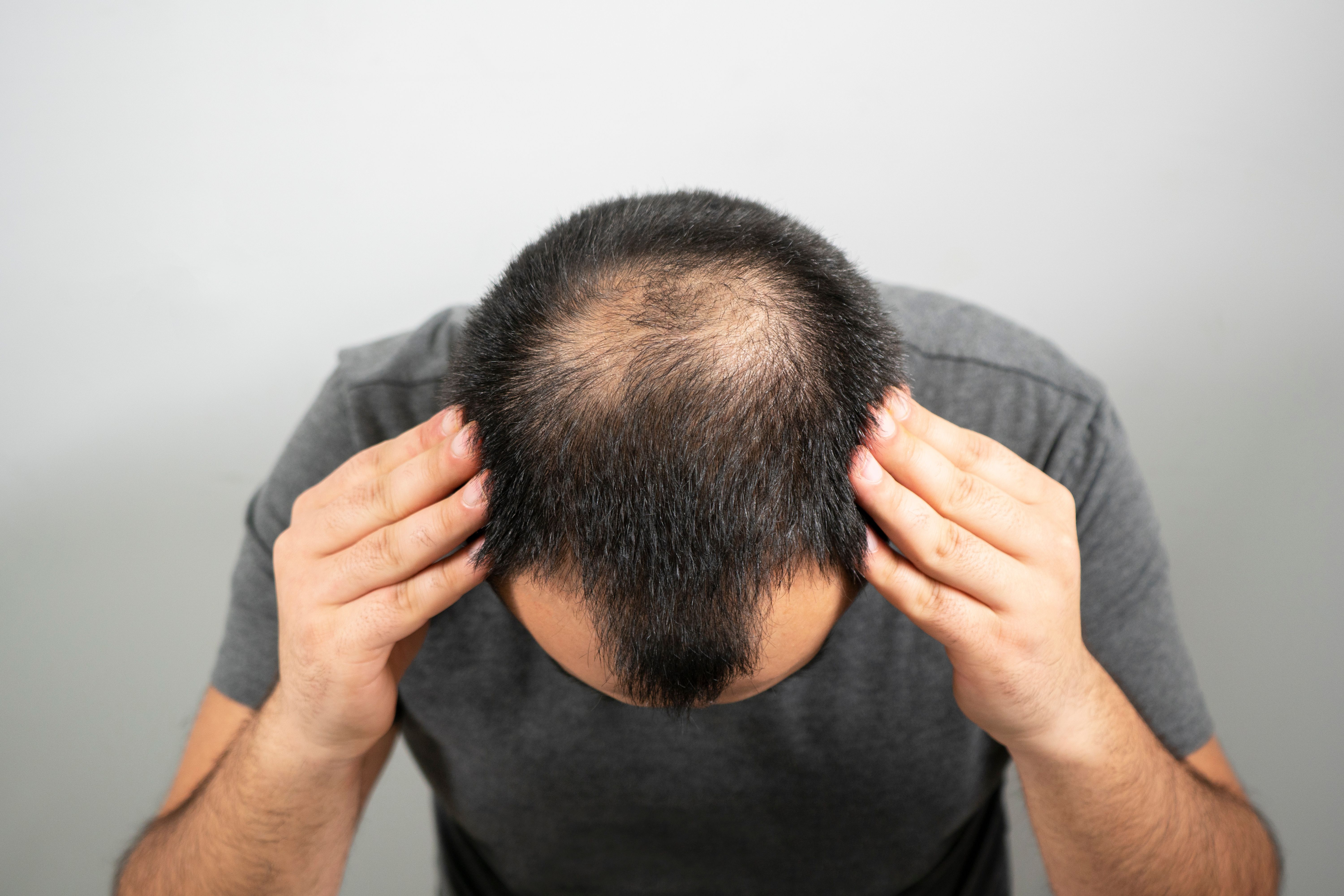- Case-Based Roundtable
- General Dermatology
- Eczema
- Chronic Hand Eczema
- Alopecia
- Aesthetics
- Vitiligo
- COVID-19
- Actinic Keratosis
- Precision Medicine and Biologics
- Rare Disease
- Wound Care
- Rosacea
- Psoriasis
- Psoriatic Arthritis
- Atopic Dermatitis
- Melasma
- NP and PA
- Skin Cancer
- Hidradenitis Suppurativa
- Drug Watch
- Pigmentary Disorders
- Acne
- Pediatric Dermatology
- Practice Management
- Prurigo Nodularis
- Buy-and-Bill
Article
Alopecia Areata Leads to Cost, Time Burdens in Cohort of Patients From Japan
Author(s):
Real-world data demonstrated marked impacts on the economy on a national and personal level.
Aside from psychosocial and emotional tolls, alopecia areata (AA) and hair loss may also have a direct and indirect impact on a nation’s overall economic burden, including detrimentally affecting cost and time.
hakkozan/AdobeStock

A recent study1 examined the overall economic burden of the condition in a cohort of patients in Japan. Researchers sought to assess this burden on a personal and national level while quantifying work and activity impairment of patients. They cited limited research relating to the economic impacts of the condition, despite large quantities of research related to the emotional toll associated with AA.
Notably, from 2012 to 2019, the prevalence of AA in Japan increased from 0.16% to 0.27%.2 Furthermore, the majority of patients with AA in the US described their financial situation as moderate or serious.3
Researchers obtained data from the Adelphi Areata Disease Specific Program (DSP), a survey conducted in Japan between January and March 2021. The cross-sectional survey contains retrospective data analyses from patients and dermatologists.
JDA board-certified dermatologists managing treatment for a minimum of 3 patients with AA monthly were eligible to conduct the survey with patients. Patients were required to be at least 15 years of age, have an ongoing AA diagnosis, and were not to be participating in another simultaneous study or trial. Of the 3 patients accrued for each dermatologist, at least 1 was expected to have a mild case of AA, 1 was expected to have a severe case of AA, and the other(s) were expected to have a moderate to severe AA diagnosis.
Upon inclusion in the study, participants (n=235) were sorted into 5 groups for analysis based on severity of scalp hair loss. These groups were as follows:
- S1: <25% hair loss
- S2: 25% to 49% hair loss
- Combined into 1 group:
- S3: 50% to 74% hair loss
- S4: 75% to 99% hair loss
- S5: 100% hair loss
Seven days prior to completing the survey, patients were asked to complete a Work Productivity and Activity Impairment (WPAI) as a measure of workplace absenteeism, presenteeism, productivity loss, and activity impairment.
For a 3 to 10- month period, physicians involved in the study completed questionnaires relating to patient demographics and their patients’ severity of scalp hair loss range. During this time, patients with AA were consulted and asked about the overall financial burden of AA, including medication and wigs, if applicable.
In total, 92.3% of participants were actively being treated with prescription medication for their AA. On average, the overall work impairment score among all participants was 24.3 ± 25.8%, and the average general activity impairment was 35.0 ± 29.5%.
At the national level, AA accounted for an estimated total annual cost of 857 million US dollars, or 112.7 billion yen. 78.2% of these costs were attributable to productivity losses, while 20.3% of costs could be traced back to the cost of medication.
“Our study found that productivity loss was largely a result of impaired productivity while at work (presenteeism) with only small losses resulting from absences from work (absenteeism). This was comparable with results found in the US. The trend is also similar to reports in Japan for other chronic skin conditions such as atopic dermatitis and psoriasis,” according to Ohyama et al. “Considering the active treatment, it is important to control hair loss to a range of less than 25%. The current study provides evidence on which to base targeted interventions to minimize these effects.”
References
- Ohyama M, Kamei K, Yuasa A, et al. Economic burden of alopecia areata: a study of direct and indirect cost in Japan using real-world data. Japanese Dermatological Association J Dermatol. Published online July 12 2023. https://doi.org/10.1111/1346-8138.16888
- Campos-Alberto E, Hirose T, Napatalung L, Ohyama M. Prevalence, comorbidities, and treatment patterns of Japanese patients with alopecia areata: a descriptive study using Japan medical data center claims database. J Dermatol. 2023; 50: 37– 45.
- Li SJ, Mostaghimi A, Tkachenko E, Huang KP. Association of out-of-pocket health care costs and financial burden for patients with alopecia areata. JAMA Dermatol. 2019; 155: 493– 4.





